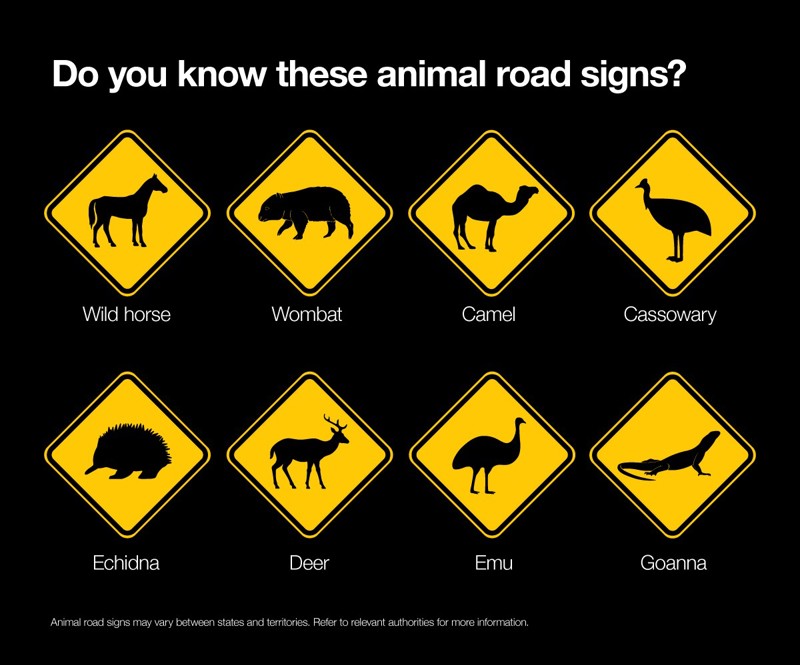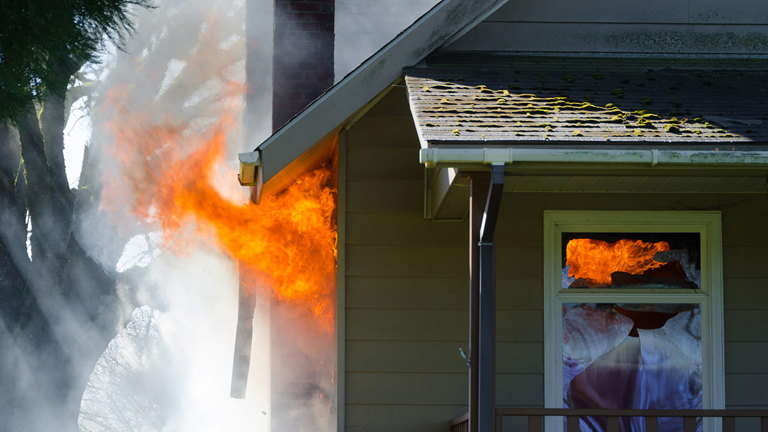If you’ve ever driven on a country or outback road in Australia, chances are you’ve witnessed the heartbreaking sight of an injured or dead animal on the side of the road – or, more devastatingly, you’ve hit an animal yourself.
Although the exact number of wild animals killed on our roads isn’t known, it’s well understood that the expansion of roads is contributing to the decimation of endangered animal populations, such as koalas and the southern cassowary.1 But it’s not just animals who are harmed in these instances. It’s thought that around 5% of fatal accidents are caused by collisions with animals.2
Understanding the steps you can take to decrease your chances of hitting an animal on the road – from a safety, animal welfare, and car insurance point of view – is vital, especially for the wildlife.
“It quite literally is life or death,” says Breanna Pitt, wildlife nurse at RSPCA Queensland.
“Slowing down or reducing road speeds through fragmented habitat will save an animal’s life. It’s comparable to school zones; the impact speed is reduced to lower the chance of fatality.”3
What should you do if you hit an animal while driving?
If you’re unfortunate enough to hit an animal while driving, the advice is the same as with any accident – first, consider the safety of yourself and your passengers.
“Your safety is important. You can’t help the animal after an accident if you put yourself in danger,” Pitt says.
If the wild animal you hit is still alive, she says to approach slowly to avoid causing it further distress.
“If it’s safe, you should stop off to the side of the road and, depending on the species, the animal may be approached slowly with a towel or box,” she says.
“They will be terrified and in pain; they will try to fight back so it’s best to drag them off the road and contact a wildlife care group or RSPCA ambulance.”
Wildlife rescue organisation WIRES advises motorists to avoid approaching snakes, monitor lizards (goannas), bats, kangaroos, wallabies, koalas or raptors such as eagles, falcons or hawks, as these animals require specialist handling.4
If the impact kills the animal, remain calm and, if safe to do so, move it to the side of the road so that it doesn’t cause further incidents.
What you should do after hitting a kangaroo
Kangaroos can be found in various habitats throughout Australia and are a common sight when driving on country or outback roads – especially at dawn or dusk.
In the Australian Capital Territory alone, rangers commonly record more than 1,000 roadside kangaroo attendances per year, and estimate there are twice as many collisions as attendances.5
For this reason, it’s important to understand how to try to avoid hitting a kangaroo, and the steps you should take if you do hit one.
“Given their size, kangaroos will require specialised transportation, so a carer or RSPCA ambulance needs to be called,” says Pitt.
If you hit a kangaroo, check if it’s safe to stop on the road. If the kangaroo isn’t breathing, check if there’s a joey in its pouch. If the kangaroo is still alive, you should approach with caution and not attempt to move it. Call the RSPCA or local wildlife rescue organisation.
If you’re in a rural area without mobile phone reception, go to the police station or local veterinarian when you reach the nearest town and notify them.
How to respond if you hit a koala
Koalas are now listed as a species vulnerable to extinction in New South Wales and Queensland, so it’s vital to know what to do if you hit one on the road.6
While this national icon might look cute and cuddly, Pitt says to remember their claws are made for climbing trees. “When a koala is stressed or in pain they will bite and scratch, leading to painful injuries, so approach them with caution,” she says.
If you do hit a koala, “a local koala care group or RSPCA ambulance should be contacted immediately,” says Pitt. If the koala is dead, remember to check the pouch of females for joeys.
WIRES recommends not attempting to remove a joey that is attached to the teat, advising: “If the joey is not attached to the teat, remove it from the pouch and keep it warm and quiet.”7
What to do if you hit a wombat
In Australia, there are three species of wombat: the bare-nosed wombat, found throughout eastern parts of Australia; the Southern hairy-nosed wombat, which lives mainly in South Australia; and the Northern hairy-nosed wombat, which is considered one of the world’s most critically endangered species.8
Wombats can be aggressive so if the animal is alive, use caution and contact your local wildlife rescue group.
If the wombat is dead, RSPCA advises that you turn the wombat gently onto its back and pull it off the road using the front paws before checking the pouch of a female for joeys. If there is a joey attached to the teat, phone your local rescue organisation.9
What you should do if you run over a snake
If you live in Australia, it’s almost a given that you’ll come across a few snakes in your lifetime. If you hit a snake on the road, Pitt advises that you use extreme caution.
“Reptile care groups or the RSPCA ambulance should be contacted if the snake cannot be correctly identified in case it’s a venomous species,” she says.
“Sometimes animals can get caught in car grills and engine bays once they’ve been hit. It’s important to stop, pull over and check your vehicle thoroughly.”
What happens if you hit a deer?
Wild deer now exist in many regions across Australia, with their numbers having exploded in recent decades.10
“Hitting a feral deer is very similar to hitting a kangaroo,” says Pitt. “They’re large and will cause a lot of damage to themselves and the vehicle.”
If you hit a deer, you should pull over to the side of the road where it’s safe to do so and call your local wildlife rescue group. If the deer is injured, it may require darting.
What to do if you hit a goanna on the road
Goannas, a type of monitor lizard, can grow to more than two metres long. They have very sharp teeth and claws that can cause significant injury so, if you hit one on the road, it’s important to exercise extreme caution.11
Similar to if you hit a snake, you should contact a reptile care group or local wildlife rescue organisation and should not try to touch or capture the animal.
WIRES advises keeping an eye on the lizard from a safe distance and keeping all pets and people away until the situation is resolved.
What you should do if you hit a cassowary
It’s estimated that fewer than 4,000 southern cassowaries remain along Queensland’s Cassowary Coast, and of that endangered population, at least 57 have been hit by vehicles since 2017.12
These flightless birds can be as tall as a person and are found in far north Queensland’s tropical rainforests, melaleuca swamps and mangrove forests.13
As cassowaries can inflict serious injuries to people and pets with their large clawed feet, it’s important to be careful if you see or hit one on the road. In the case of an accident – whether the bird is alive or dead – call Queensland’s Department of Environment and Science on 1300 130 372.13
What happens if you hit an echidna?
Echidnas are most active during their breeding season from late June to November and, despite the fact they’re widespread in Australia, it can be rare to spot one.14
There are exceptions, however – as drivers at one of Australia’s most famous race tracks found out when an echidna crossed the road at the Bathurst 1000 race in 2021.14
WIRES advises any echidna injured by cars must be taken to a veterinary clinic and x-rayed. It’s impossible to examine these animals properly without x-ray as you cannot feel broken bones as in other animals.15
If you hit an echidna, call your local wildlife rescue group or the RSPCA. They might advise using a heavy blanket or towel to pick the animal up. Never use a shovel to pick up an echidna as this can cause broken toes and spines.
What to do if you hit a domestic pet
In an urban setting, it’s unlikely you’ll encounter some of the animals mentioned above. However, it pays to understand what your responsibilities are in the unfortunate event you hit a dog or cat.
“If it’s safe to do so, collect the animal and present it to a veterinary hospital or clinic immediately,” advises Pitt.
If possible, Pitt says you should also contact the pet’s owner or, depending on the situation, report the incident to the police.
In fact, in NSW a motorist could face a maximum penalty of six months in jail for failing to take appropriate action after hitting an animal on the road.16 The Prevention of Cruelty to Animals Act in that state specifies the driver of a vehicle which strikes and injures an animal must “inform, as soon as practicable, an officer or a person in charge of the animal that the animal has been injured”.16
Tips to help avoid hitting an animal on the road
Thankfully, there are some things you can do to try to avoid hitting an animal on the road – whether it’s wildlife on our outback roads or domestic animals in an urban setting.
“Follow the enforced speed limits, slow down in poorly lit or bush-lined roads, and always observe wildlife slow zones,” says Pitt.

Obey speed limits
Stick to posted speed limits and reduce your speed in areas marked with wildlife warning signs.
Stay alert
Especially at dawn and dusk when wildlife is most active, keep your eyes on the road and scan the sides for movement. “Dusk and dawn are the high crash zone times, although any time of day or night can present a risk,” says Pitt. “Cooler weather species such as macropods, echidnas and koalas are on the move mostly during June to October, whilst everything else prefers the heat, so you should be especially alert from late August to late April.”
Use high beams
When safe and appropriate, use high beams to increase visibility.
Know local wildlife
Familiarise yourself with common local wildlife and their habits, as this can help you anticipate their presence on the road.
Does car insurance cover hitting animals?
Depending on your insurer and your level of cover, and presuming you were driving legally, you may be covered for the costs of repairing your car if you hit an animal. Youi has a range of car insurance options for you to choose from. To find a policy that’s a bit more you-shaped, start a quote with Youi today.
1 Source: BBC – Australia’s ‘road kill’ map, 2019
2 Source: The University of Melbourne – 10 million animals are hit on our roads each year. Here’s how you can help them (and steer clear of them) these holidays, 2020
3 Source: RSPCA – How can habitat loss affect animal welfare?
4 Source: WIRES – Emergency Wildlife Rescue Advice
5 Source: ACT Government – Road Safety Action Plan
6 Source: WIRES – Koalas
7 Source: WIRES – Give way for wildlife
8 Source: The Wombat Foundation – Wombats
9 Source: RSPCA – Wombats
10 Source: Australian Government – New Feral Deer Plan Protects Agriculture and Environment, 2023
11 Source: WIRES – Monitor lizards
12 Source: ABC – Mission Beach cassowary deaths spark calls for drivers to flash headlights, 2022
13 Source: Qld Government – Southern cassowary
14 Source: ABC – What to do if you see an echidna cross the road, like at the Bathurst 1000?, 2021
15 Source: WIRES – Echidna
16 Source: NSW Government – Prevention of Cruelty to Animals Act 1979 No 200




